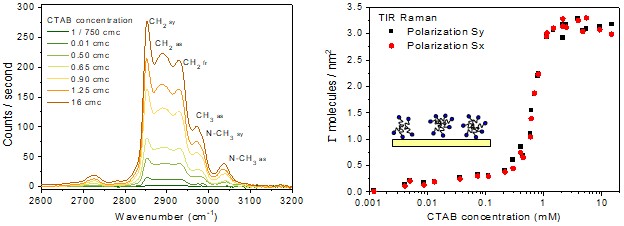Conventional Raman spectroscopy is mainly used to probe the vibrational structure in bulk materials. However, by taking advantage of the properties of evanescent waves, the surface sensitivity can be drastically enhanced making total internal reflection Raman scattering (TIR-Raman) one of the most sensitive forms of vibrational spectroscopy for studying adsorption on dielectric materials. The probing depth can typically be varied between 60 to 500 nm depending on the angle of incidence, laser wavelength, and refractive index contrasts. The technique can be used to obtain chemically specific and quantitative information in applications ranging from surfactant adsorption, polymer films, lubrication, and biological interfaces, including the surface of leaves, the structure of lipid bilayers, and their interactions with peptides & proteins.One important requirement for the solid substrate material is low fluorescence and transparency at the frequency of the exciting laser.Typical materials include silica (i.e., glass), sapphire, calcium fluoride, zirconia, and even diamond. Moreover, from spectra collected at different polarization combinations, information regarding the orientation of molecules at the interface can also be extracted. The combination of TIR Raman and Vibrational Sum Frequency spectroscopy (VSFS) can be particularly powerful, as they can provide complementary information. The figures below exemplify how TIR Raman was used to determine the adsorption of a cationic surfactant (CTAB)to a silica surface.
References
JACS 2008, 130, 17434–17445. DOI: 10.1021/ja805169zAnalyst, 2012, 137, 35–48. DOI: 10.1039/C1AN15722A
Langmuir 2014, 30, 8878−8888. DOI: 10.1021/la501319r


